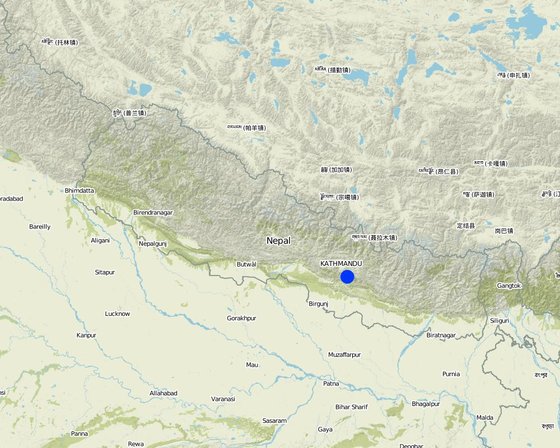

Aims / objectives: This approach's goal is to preserve traditional khuwa production methods, while also applying new and rather sustainable technologies on the current process. Further, the local khuwa production creates employment - at the factory itself, as well as during supply and distribution processes.
Methods: This focusses mainly on the methods applied during khuwa production:
1. Milk is collected from local farmers.
2. Milk is boiled for approximately 30mins on improved stoves, using locally collected firewood.
3. Boiled is continued until milk's volume has reduced to half.
4. After around 1 hour of simmering milk has turned into a thick paste, which is known as khuwa.
5. Paste needs to be cooled.
Stages of implementation: The Khuwa Utpadan factory was founded in 2050 B.S. by locals, whose ancestors had already been involved in Khuwa production.
Firstly necessary utensils and materials were purchased. Later improved cooking stoves were installed to reduce the smoke formation and amount of required fire wood.
Role of stakeholders: 1. Providing employment opportunities to local villagers .
2. Buying milk from locals, creating a source of income for them.
3. Maintaining a regular flow of Khuwa production to purchasers in surrounding cities, including Kathmandu.
4. Preserving traditional Khuwa production methods among the local community.
Other important information: On the one hand, khuwa production has helped to create employment opportunities and to make use of locally produced milk, on the other hand stakeholders have been facing problems in supplying khuwa by paying more money .

Байршил: Kavre/Palanchowk, Nepal, Непал
Эхлэх огноо: 2050
Төгсөх жил: тодорхойгүй
Арга барилын төрөл| Ямар оролцогч талууд / хэрэгжүүлэгч байгууллагууд арга барилд оролцож байсан бэ? | Оролцогч талуудыг тодорхойлно уу | Оролцогч талуудын үүргийг тайлбарлана уу |
| Орон нутгийн газар ашиглагч / орон нутгийн иргэд | Mr. Shomnath Ghimire. Local milk suppliers, locals with experience in khuwa making | Construction of stoves and other utensils, manpower required for khuwa production. Women were rather involved in several housework related activities, while men were responsible for external work, such us construction and land conversion processes. Locals in Chyamrangbesi region are generally not in a very good economic condition |
| Хувийн хэвшил | Loans from a local finance | |
| Орон нутгийн захиргаа | Local milk suppliers |
Шийдвэр гаргасан этгээд
Шийдвэр гаргах үндэслэл нь
Knowledge and expertise in the different processes of khuwa making
Research was done by the students of Kathmandu University.
Research was carried out on station
Газар ашиглагчаас гаргасан хөдөлмөр хүчний зардал
Due to the installation of improved cooking stoves, the amount of required firewood could be reduced, havong a positive effect on progressing deforestation.
The financial situation of many poor local villagers has been improved.